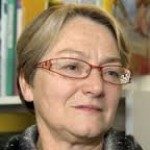Lien vers Pubmed [PMID] – 10924159
Biochemistry 2000 Aug;39(31):9612-22
Many chemokines have direct suppressive activity in vitro and in vivo on primitive hematopoietic cells. However, few chemokine-derived peptides have shown a significant activity in inhibiting hematopoiesis. Interestingly, a peptide derived from the 34-58 sequence of the CXC chemokine platelet factor 4 (PF4) produced a 30-40% inhibition of proliferation of murine hematopoietic progenitors (CFU-MK, CFU-GM, and BFU-E) in vitro, at concentrations of 30-60-fold lower than PF4. The aim of the present work was to define the structural parameters and motifs involved in conferring biological activity to the peptide PF4(34-58). Both structural predictions and determinations revealed a new helical motif that was further localized between residues 38 and 46. This helix was necessary for binding of the peptide and for permitting the functional DLQ motif at position 54-56 to activate the putative receptor site. Peptides lacking either the helical or the DLQ motif were devoid of inhibitory activity on the hematopoietic progenitors in vitro. However, among inactive peptides, only those having the helical motif counteracted the inhibition induced by the active peptide PF4(34-58). This suggested that the helix might be required for peptide interactions with a putative receptor site, whereas the DLQ motif would be implicated in the activation of this receptor. These results identify for the first time the dual requirements for the design of chemokine-derived peptides with high suppressive activity on hematopoiesis, as well as for the design of molecules with antagonistic action.

